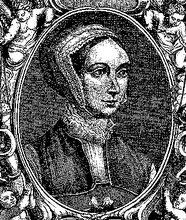In March I posted on the books which I had read since returning from Australia. Well, I have kept up a good pace with reading since then, in this my Silver Jubilee year. These are the titles which I have read since the end of March:
"The Heritage of Catholic York", by John Rayne-Davis, which I found to be a very poor book.
"Evangelical Catholicism", by George Weigel, which, in spite of its journalistic style, is a very important book for our era. This is one which I will read again.
"The quest for the true Cross", by Carsten Theide and Matthew D'Ancona, which I found to be a very poor attempt to chronicle this topic. I almost reached the end of the book, but had to give up.
"Voices of Morbath", by Eamonn Duffy; the presentation of a tremendous history of an English village during the reformation by a genuine historian.
"Prayer: Living with God", by Simon Tugwell OP. This is my second read of this masterpiece on the Spiritual life.
"New Rules", by Daniel Yankelovich. I only very occasionally dip into psycho-babble books, but with hindsight, this 1981 study reveals much about what has been taking place in our society in recent decades.
"The autobiography of an Elizabethan", by John Gerard. Again, a second reading of this tremendous account of Catholic life in England under Elizabeth I.
"Cardinal Heenan", by James Hagerty. An easy synopsis of the life of this good English bishop, but I didn't learn anything new.
"A Crown of Thorns", by John Cardinal Heenan. An excellent piece of history by the bishop himself. This book will remain an important reference point as our Catholic history develops.
And I'm presently in the middle of reading two books:
"A man on a donkey", by H. Prescott, which is an old-fashioned and very slow novel about the Pilgrimage of Grace. I'm about a quarter of the way into it and not much has happened yet.
"The fulfilment of all desire", by Ralph Martin. Again, I read this masterpiece a couple of years ago, but it is so good that I am savouring every page.
Oh, and my slow reading of the Summa is still continuing (very slowly).
While I was at seminary I kept a list of all the books which I read, and I have obviously started doing this again. It is quite interesting to look back on what one has read, and of course, to make room for books that one still wants to read.
I took the above photo at the end of August. It shows the site (the green field bordered by trees) of the Carthusian Monastery of Axeholme (Low Melwood Priory), near Epworth in Lincolnshire. It was here that Augustine Webster was Prior. I made a small detour when returning to Yorkshire after the Youth 2000 Festival at Walsingham in order to see this site. Nothing, apart from stretches of the original moat, now remains of this Charterhouse and the site is now farm land. However, a group from my new parish in Ossett go there on pilgrimage each May.























